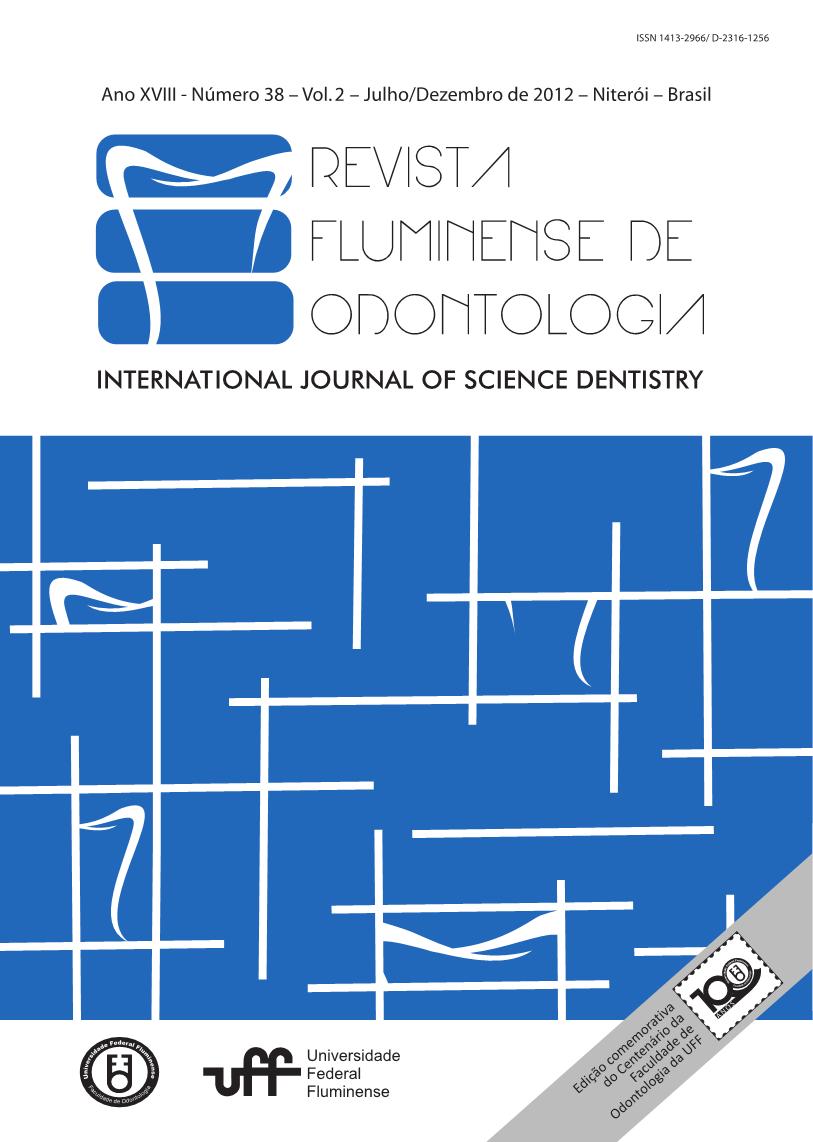Influence of acid mediums on degradation and adherence of streptococcus mutans to a indirect dimethacrylate-based polymeric matrix
DOI:
https://doi.org/10.22409/ijosd.v1i38.131Abstract
Objectives: Dental biofilm can be formed in greater quantities and on rough surfaces. Biofilm maturation has clinical implications because the presence of pathogenic microorganisms. This study verified surface degradation and bacterial adherence to Resilab Master® after immersion inacid solutions. Material and Methods: The specimens (diameter=10 mm ⁄ thickness = 2 mm) were stored in deionized water for 7 days, and divided into immersion groups (n=10): Coca Cola, G1; H2OH lemon refrigerant, G2; phosphoric acid, G3; and citric acid, G4; immersed for 7 days. Mass (g)
was analyzed with a digital scale, and Ra roughness (μm) by readouts on specimen surfaces using a roughness meter. Three specimens of the groups were analyzed by SEM(deionized water – control). Five specimens of the groups were introduced into test tubes with Streptococcus mutansand glucose. Results: They were incubated at 37ºC/24h. Results: Increase in roughness (G1.T0=0.2209, G1.TF=0.2262; G2.T0=0.1705, G2.TF=0.1756;
G3.T0=0.1848, G3.TF=0.2276; G4.T0=0.1694, G4.TF=0.1905) showing no significant differences (signal test, p>0.05). Loss of mass, being significant (Student’s-t test p>0.05) for Groups G1 (G1.T0=0.3560, G1.TF=0.3535) and G3 (G3.T0=0.3594, G3.TF=0.3532). Adherence of Streptococcus mutansforming colonies was observed on the surface degraded (UFC/mg):
3.83 x 104, G1; 2.83 x 104, G2; 4.67 x 104, G3; 3.67 x 105, G4 showing no significant differences among the groups (Kruskal-Wallis test, p>0.05).
Conclusions: The acid solutions caused damage to the material surface with loss of matter, intensifying bacterial colonization. Solutions with the same pH and type of acid, but different compositions, showed no significant differences on indirect polymeric matrix degradation.
Downloads
Download data is not yet available.


